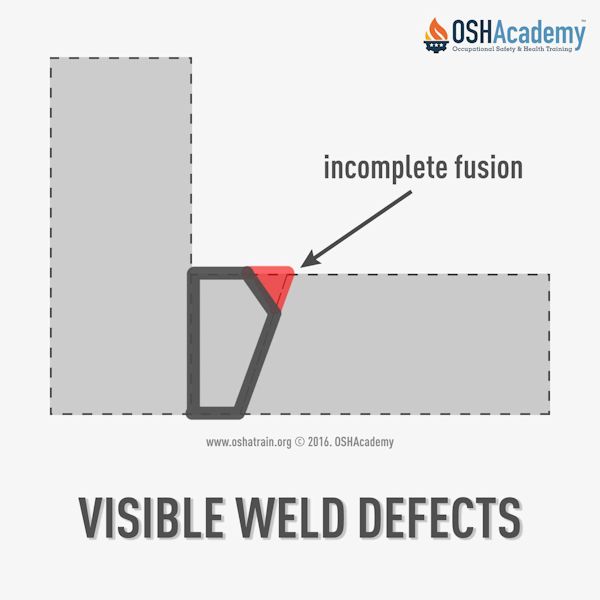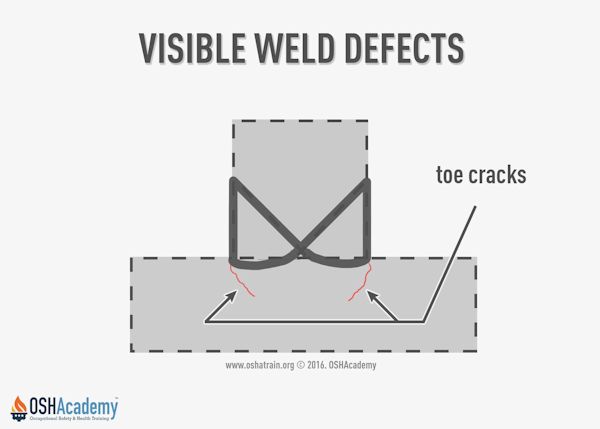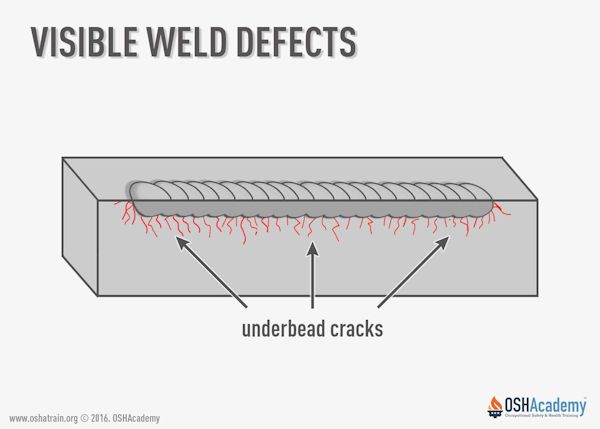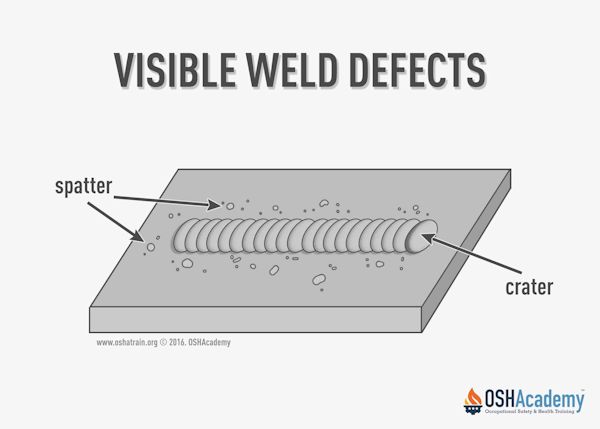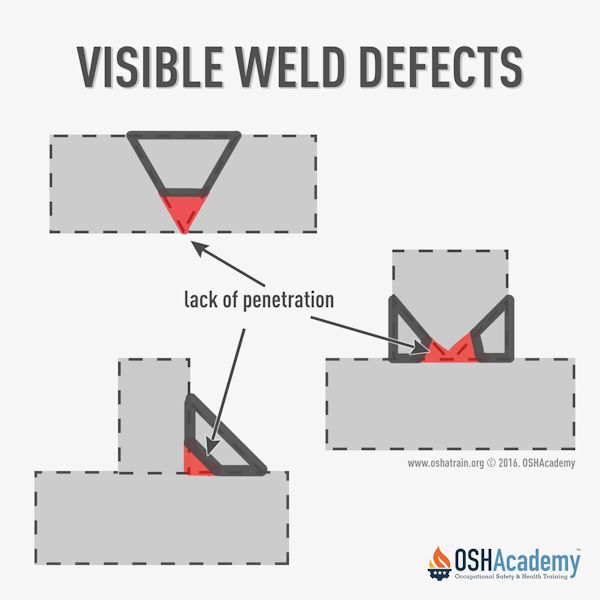Welding Defects
Defects in welds can cause unforeseen injuries and accidents. Common weld defects to be familiar with to ensure your safety include:
- Incomplete fusion: Incomplete fusion occurs when the weld fails to fuse one side of the joint in the root. The most common type of incomplete fusion is overlap.
- Inadequate joint and root penetration: Inadequate joint and root penetration is cause for rejection of a weld even if it is sound in all other respects. The strength required in a weldment is achieved only when the specified joint and root penetration is achieved.
- Spatter: Spatter is the term used to describe metal particles or globules expelled during welding and that do not form part of the weld. When spatter occurs, small balls of metal are stuck to the base metal's surface along the line of a weld.
- Overlap: Overlap is a protrusion of the weld metal beyond the bond at the toe of the weld. This is the most common type of incomplete fusion.
- Undercut: An undercut is a groove melted into the base metal adjacent to the toe and not filled with weld metal.
- Root cracks: Root cracks are similar to toe cracks except that they occur at the root of the weld. Root cracks may be in the weld metal or in the base metal.
- Toe cracks: Toe cracks occur in the base metal, at the toe of the weld.
- Crater cracks: One common kind of crack is the crater crack. This occurs in the crater or depression at the termination of a weld bead in gas or arc welding.
- Underbead cracks: Underbead cracks occur in the heat-affected zone underneath a bead and do not extend to the metal's surface.
- Voids: Voids, also called gas pockets or blowholes, occur due to gas being absorbed during the welding and then trapped as the metal solidifies.
- Inclusions: Slag inclusion is the term used to describe the weld defect in which non-metallic solid material is trapped in the weld metal or at the bond between the weld metal and the base metal.
Knowledge Check Choose the best answer for the question.
1-5. What is the most common type of incomplete fusion during a weld?
You forgot to answer the question!

